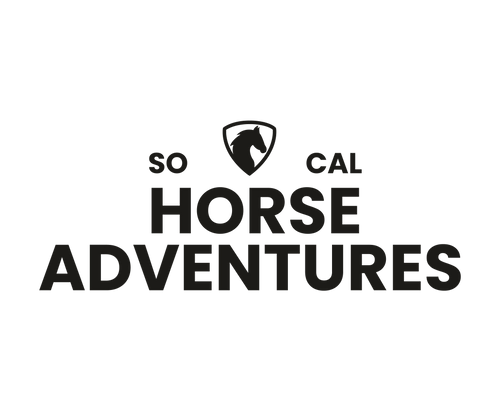Equestrian disciplines come in many forms, each with its own unique history, techniques, and cultural significance. Two such disciplines that have captivated horse enthusiasts worldwide are Alta Escuela and Doma Vaquera. While both are rooted in Spanish traditions and emphasize a strong bond between horse and rider, they are distinct in their methods, movements, and purposes. In this blog post, I'll explore the key differences between Alta Escuela and Doma Vaquera to help you appreciate the unique qualities of each discipline.
What is Alta Escuela?
Alta Escuela, also known as High School riding, is a classical form of dressage that emphasizes precision, harmony, and elegance. Originating from the training methods of the Spanish Riding School of Vienna, Alta Escuela showcases the highest level of equestrian artistry through a series of intricate and highly controlled movements.
Key Characteristics of Alta Escuela:
- Historical Roots: Alta Escuela has its origins in the Renaissance period, heavily influenced by the Spanish Riding School of Vienna.
- Movements: Key movements in Alta Escuela include the Piaffe, Passage, Levade, Courbette, and Spanish Walk. These movements require the horse to perform with great balance, coordination, and responsiveness.
- Purpose: The primary goal of Alta Escuela is to demonstrate the pinnacle of training and the natural athleticism of the horse. It is often performed in exhibitions and competitions to showcase the skill of both horse and rider.
- Training Focus: Alta Escuela training is methodical and patient, focusing on developing the horse's natural abilities through systematic and humane techniques.
What is Doma Vaquera?
Doma Vaquera, translating to "cowboy dressage," is a traditional Spanish equestrian discipline rooted in the working practices of cattle herding. It is a practical and functional form of riding that emphasizes agility, quick responses, and the ability to perform complex maneuvers required for managing livestock.
Key Characteristics of Doma Vaquera:
- Historical Roots: Doma Vaquera evolved from the working methods of Spanish cowboys, or vaqueros, who needed a reliable and agile horse to manage cattle effectively.
- Movements: Key movements in Doma Vaquera include the Rejoneo (bullfighting on horseback), Pirueta (tight turns), and Arreos (herding movements). These maneuvers are designed to demonstrate the horse's agility, speed, and obedience.
- Purpose: The primary goal of Doma Vaquera is practical, focusing on the skills needed for effective cattle herding. It is also performed in competitions and exhibitions to showcase the discipline's unique techniques and the bond between horse and rider.
- Training Focus: Doma Vaquera training emphasizes quick responses and maneuverability. Horses are trained to be highly responsive to subtle cues from the rider, reflecting the practical needs of working with livestock.
Comparing Alta Escuela and Doma Vaquera
While both Alta Escuela and Doma Vaquera highlight the versatility and skill of horses, they differ significantly in their focus and execution.
Training and Techniques:
- Alta Escuela: Emphasizes systematic, methodical training aimed at achieving precision and harmony in movements. Training is often slow and deliberate, focusing on building the horse's natural abilities.
- Doma Vaquera: Focuses on practical, functional training aimed at developing agility and quick responses. Training is often dynamic, reflecting the practical needs of cattle herding.
Movements and Purpose:
- Alta Escuela: Movements are highly controlled and performed with elegance and precision. The purpose is to showcase the horse's training and the rider's skill in a performance setting.
- Doma Vaquera: Movements are practical and designed for quick execution. The purpose is functional, aimed at managing livestock, but also performed in competitions to demonstrate the horse's versatility and responsiveness.
Cultural Significance:
- Alta Escuela: Represents the pinnacle of classical dressage and equestrian artistry, with a rich history rooted in royal courts and prestigious riding schools.
- Doma Vaquera: Represents the traditions of Spanish cowboys and rural life, emphasizing practical skills and the working relationship between horse and rider.
Alta Escuela and Doma Vaquera are two distinct yet equally captivating equestrian disciplines. While Alta Escuela focuses on the elegance and precision of classical dressage, Doma Vaquera emphasizes the practical and functional skills needed for cattle herding. Both disciplines highlight the incredible versatility, skill, and beauty of horses, each with its own unique charm and cultural significance. Whether you're drawn to the refined artistry of Alta Escuela or the dynamic practicality of Doma Vaquera, both offer a fascinating glimpse into the rich world of Spanish equestrian traditions.
By sharing my experiences and insights, I hope to inspire and educate others about the beauty and complexity of these remarkable equestrian disciplines. If you have any questions or want to learn more about my training methods, feel free to reach out or follow my blog for more updates and tips on horse training.
~Adam
